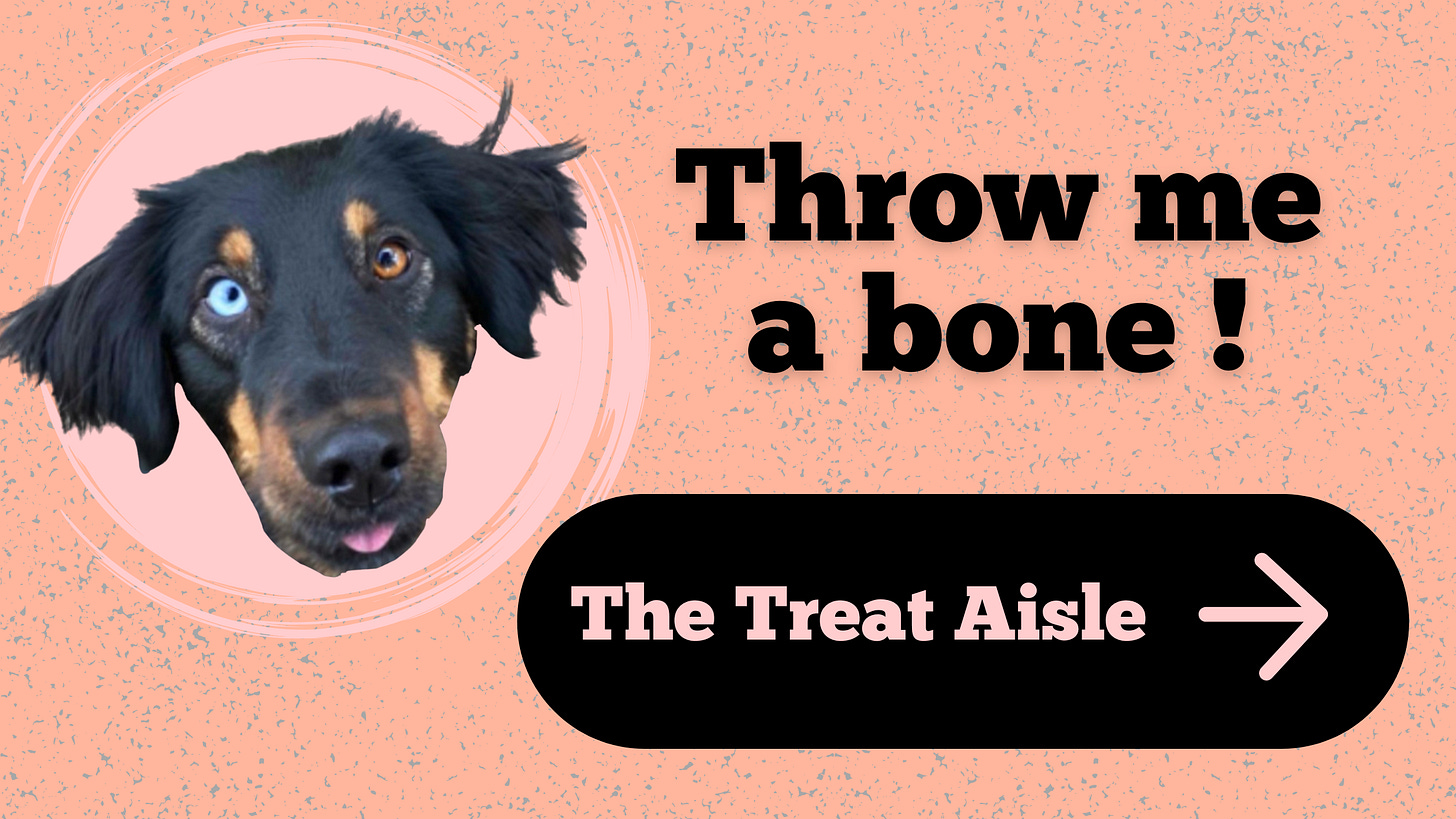Shake It Off
Complete that Stress Cycle!
When we first got Pants, she was full bee on a string. She’d pull so hard she’d sometimes pop up on her hind legs. She’d swerve from one side of the sidewalk to another, yanking on my shoulder like she was trying to beat her reps at the gym.
And when she saw another dog…Balto save me, when she saw another dog, she’d lose her itty-bitty mind. We haven’t done a genetic test on her so we don’t know exactly what she is, but my money is on Swiss because that dog can yodel. As soon as she saw another dog, she’d hit the end of the leash hard enough to make me stumble, barking and yelping, tail high in the air.
The other dogs in my neighborhood were much better trained than Pants (in Pants’ defense, they also hadn’t been literal street dogs mere months before), and so usually ignored her. Once I got her down the sidewalk a ways, she’d conclude her performance with a shake off.
You know the shake offwhen a dog is wet or dusty or just woke up, or has just had a tense interaction with another dog, it’ll do a full-body shake down before carrying on with its business.
The shake off, which dog behavior consultant Lauren Novack calls an adrenaline flush, is the way dogs release muscle tension and stress hormones, and transition from one state to another.
If Only Humans Could Shake It Off
When was the last time you left an interaction feeling a bit ick, anxious, or frustrated? How long did that emotion cling to you? Did you replay the event as you tried in vain to fall asleep? Did you rehearse what you wish you’d said in the shower or on your commute? Is it still bothering you now, even though it was a week ago?
Taylor Swift wasn’t wrong—shaking it off is a great coping skill, but sadly humans can’t do the whole-body rough up the way dogs do. For us, it’s a bit more complicated.
The Stress Cycle
In Burnout: The Secret to Unlocking the Stress Cycle, Amelia and
introduce the concept of the stress cycle. Let’s say someone cuts me off on the highway and then slows down. This infuriates me, and I start yelling my head off.I’m reacting to two separate things here: the external stressor (the guy who cut me off) and the internal stress (my physiological reaction). My heart rate and blood pressure spike, my muscles tighten, and my breathing gets shallower. I experience these sensations as an emotion: rage.
Now let’s say the guy takes the next exit. He’s gone. My stressor has disappeared.
My stress, however, has not. It follows me through the rest of the day, turning up the volume on every other stressor I encounter so my temper is shorter, my frustration tolerance is lower, and I feel crummy.
Let’s just acknowledge that this system sucks. But it used to be pretty useful.
Picture this: it’s 10,000 years ago, and I’m out on the plains hunting by myself (not a smart move, but whatever). I realize a lion is stalking me in the grass. My fight or flight kicks in, and I prepare to battle the lion or run back to my tribe. My heart rate and blood pressure increase, all my senses heighten, my breathing gets shallower to get more oxygen to my muscles and heart, and my blood (which usually hangs out en masse in the digestive tract) heads to my muscles to make me stronger and faster. I am a SURVIVAL MACHINE, and I have two options: fight or run.

Let’s say I take option A: fight. In the unlikely event that I win, I feel amazing. I’ve used all my strength and skill and emerged victorious. I’ve beaten the stressor, and I’ve burned off my stress.
Now let’s say I take option B: run. Fueled by my stress chemicals, I run faster than I’ve ever run before, yelling and screaming the whole way to alert my village. They hear me and come out in force with all their noisemakers and voices to scare the lion off. It works! I make it back to my people, and they’re so happy I survived that they throw a feast. Once again, the stressor has been vanquished, and the stress burned off—this time through running and connecting with my community.
Back to the modern age and that jerk who cut me off. He’s not a lion. He poses zero threat to my survival. But my brain doesn’t know that. It reacts to him, to the frustrating customer service rep, and to the unexpected meeting with my boss in the same way it would to a lion stalking me in the grass.
Not. Helpful.
There’s nothing to fight or run away from here. The other driver disappears, the phone call with the customer service rep ends, and the meeting with my boss gets canceled. The stressor is gone, but the stress remains. So what are we supposed to do?
Shake It Off
Pants has the same problem we do. She thinks the mail deliverer, the Fedex person, the neighbor from Buy Nothing who’s picking up a bag of clothes from my porch, and the squirrel on the fence are all lions. Which is why we’ve gone through three window screens and four sets of blinds as of this writing. But after her freakout, Pants gets to shake it off.
You can try that if you want. Leave a comment to let us know how it goes.
The Nagoski sisters have another idea: completing the stress cycle. You’ve got the stressor, you’ve got the stress, you’ve got the fight or flight—all you need is the resolution, the adrenaline flush, the shake-off.
Completing the stress cycle means doing something with your body that feels like defeating or running away from a lion. It means burning off the adrenaline and cortisol and informing your fight or flight system that the stressor has been defeated. The lion is dead.
The fastest and easiest way to complete the stress cycle is with is a burst of movement. Keep in mind: this is not exercise. The goal is not weight loss or building strength. It’s to flip the off-switch on your stress. What does this look like?
I’m a fan of jumping jacks. (I mean, not really a fan, but they do the job.) Running up the stairs works great, too. But including your community is an even better option. If you’ve got kids, an impromptu dance party or wiggle-fest is a great option. And of course, you can wrestle, play tug-of-war, or do zoomies with your dog. The goal is two minutes or less of quick movement to get that heart rate up and then bring yourself back to calm. Burn off the stress chemicals. Shake it off.

Pants usually doesn’t bark at other dogs on walks anymore. She can trot by with a gentle, “keep going,” reminder from me, and I’m so proud of her. Even so, after the other dog disappears around the corner, Pants still needs to shake off the adrenaline, and that’s okay.
So how do you shake it off?






I actually did, just the other day, shake my whole body after going through a tough moment because I was inspired by how good Ginger is getting at self-regulating her hard emotions! It’s amazing how much they teach us when we’re paying attention and willing to learn, isn’t it?! I love this piece, Chloe! Thank you for sharing it!
I recently adopted an 8 year old female dog who has been in 3 homes before me. We are working on not turning into demon dog during walks and when looking out of her favorite window. She yawns a huge yawn after calming down. She’s improving everyday but still needs to yawn away her stress occasionally.